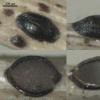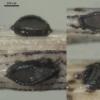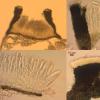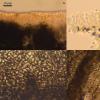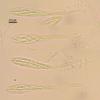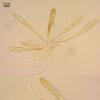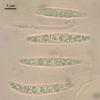
18-12-2025 21:17
Pol DebaenstThe identification took me to Byssonectria deformi

15-12-2025 07:09
 Danny Newman
Danny Newman
indet. Rutstroemiaceae sp. on unk. fallen leavesMc

19-12-2025 10:10
Patrice TANCHAUDBonjour, récolte réalisée en milieu dunaire, a

18-12-2025 17:23
 Bruno Coué
Bruno Coué
Bonjour,je serais heureux d'avoir votre avis sur c

18-12-2025 18:07
Margot en Geert VullingsThese plumes were found on rotten wood.They strong

17-12-2025 18:35
 Michel Hairaud
Michel Hairaud
Bonjour à tous/Hi to everyone I am passing along

15-12-2025 15:48
 Danny Newman
Danny Newman
Melanospora cf. lagenaria on old, rotting, fallen

15-12-2025 15:54
 Johan Boonefaes
Johan Boonefaes
Unknown anamorph found on the ground in coastal sa

15-12-2025 21:11
 Hardware Tony
Hardware Tony
Small clavate hairs, negative croziers and IKI bb
The host plant - Eriophorum vaginatum, at bog. The fungus was fruiting abundantly on several bushes growing nearby. 04.08.2012, N61,065408° E69,455652°.
Hysterothecia ellipsoid (expanding when overmature to circular), to 0,9 x 0,5 mm, first conave with longitudinal slit (rarely irregular bursting by 3-4 lobes), later expanding to short-cylindrical; outer surface black, with more or less pronounced yellow rim at the edge, hymenium grayish.
Ectalexcipulum of flanks from textura epidermoidea, inside lays hyaline textura globosa, which exceeding external brown layer at the edge (yellowish collar from cylindrical cells about 15-20 x 4 mk); base of receptacle lined with thin layer of labirinthuloid tissue; subhymenium from parralel hyphae 2,5 mk broad; asci clavate, with clamp, inamyloid, 76-109 x 11,4-13; paraphyses cylindrical (1 mk), circinate, branched in upper part, with broadened base (up to 5 mk) separated from upper part by septa; spores subfusoid, curved, some with gelatinose sheath, with two big guttules and plenty of small, 27,3 (24-33) x 3,9 (3,3-4,4) (Q=7,05; N=17).

